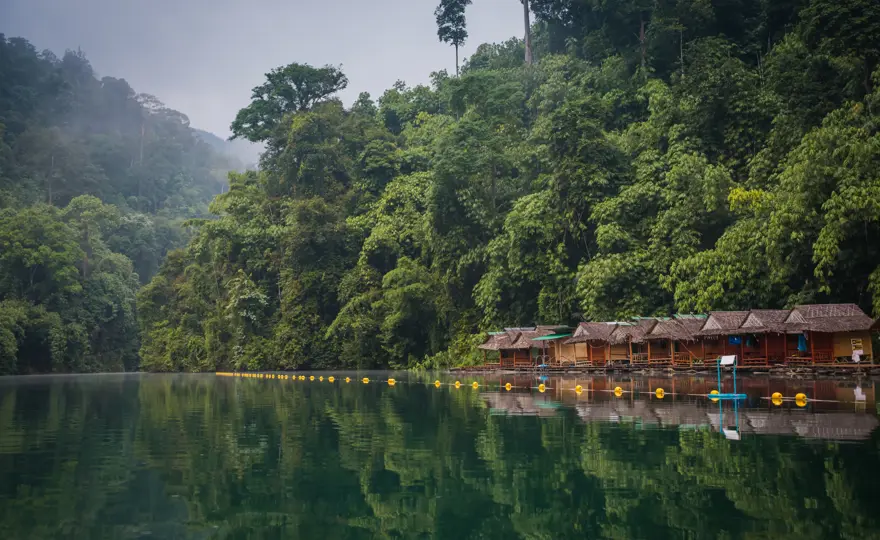ClientEarth Communications
30th June 2021


In Southeast Asia, approximately 140 million people depend on forests for their livelihoods. But these forests are under threat due to deforestation and environmental degradation.
Mounting evidence shows that forest-dependent communities around the world play a key role in protecting their woodlands, their biodiversity and the carbon they store. This can be achieved through the practice of community forestry, which is when communities that rely on forests play a prominent and active role in their management.
Effective recognition of community tenure rights and community based forest management have been proven to reduce deforestation, which is a key contributor to climate change.
As a testament to this, countries like Thailand and Nepal have adopted laws to hand over management of forests to the people that depend on them. But these legal frameworks must be participatory and enforceable in order for communities to reap the benefits.
Over the past ten years, we’ve helped countries in West and Central Africa develop strong community forestry frameworks. Recently, our work has expanded into Southeast Asia to bring legal expertise and support communities defending some of the world’s most important forests.
In the broader Asia-Pacific region, community forestry first emerged in the 1970s as an attempt to address alarming rates of deforestation and environmental degradation.
Governments slowly began recognising that direct participation of local communities and indigenous peoples in forest governance could help restore forests.
Stronger community rights resulted in better managed forests, reduced levels of deforestation and improved livelihoods.
In the case of Nepal, its model of community forestry was developed in response to poverty, with the notion of ‘forests for the people’. Community forests are granted for specific purposes, including forest maintenance and protection, ecotourism or growing products like cardamom or lemongrass.
It is important that community forestry governance is inclusive. In Nepal, participation of community members became a legal obligation. Before handing over a community forest, all forest users must be accounted for and must have participated in the preparation of their bylaws.
But in the Philippines, those organising forest management sometimes only represent a fraction of the community – which means many people are left out of decision-making.
The size and stages of development of community forestry models differ widely across the region but, overall, it is estimated that 34% of forest land is under community-based forestry regimes in Asia.
ClientEarth lawyers developed a community forestry toolkit which helps support laws that enshrine the management rights of indigenous and local communities for forests worldwide.
This toolkit is now being brought to Southeast Asia along with new legal analyses for specific countries, like Thailand and Cambodia.
In 2019, the toolkit was tested with government representatives from Southeast Asia during a ‘policy-dialogue’ meeting, together with non-profit The Center for People and Forests (RECOFTC) and the Association of Southeast Asian Nations Working Group on Social Forestry (ASEAN-SF).
At this event, ClientEarth lawyers disseminated a framework report on forest management to provide concrete and practical tools for civil society and decision-makers to improve community forestry laws in the region.
Most recently, in collaboration with RECOFTC, lawyers conducted an in-depth legal assessment into community forestry in Thailand, based on the recent Community Forest Act, to promote the improvement of laws in the country.
This publication contains key recommendations for how to ensure national laws are effective at protecting local rights and preserving forests.
As ClientEarth’s work in Southeast Asia grows, the community forestry toolkit is planned to be used more widely in the region.
For example, Cambodia is currently engaging in reform processes on communities’ rights, and the toolkit can be used to strengthen this process.
Alongside the Community Empowerment and Development Team (CEDT) and Columbia University and Lewis and Clark Law School, ClientEarth lawyers are finalising an analysis of Community Protected Areas in Cambodia. This will contain recommendations for strengthening the model based on the community forestry toolkit.
The analysis will be translated and made available in Khmer, which will enable the analysis and key findings to be made accessible to a wide range of audiences in the country.
The coming years represent a critical point for tackling global warming, biodiversity loss and forest destruction. Building strong community forestry frameworks in Southeast Asia can help mitigate this, while also having a positive impact on communities’ livelihoods.
Photo credit: Marcin Kalinski/Unsplash